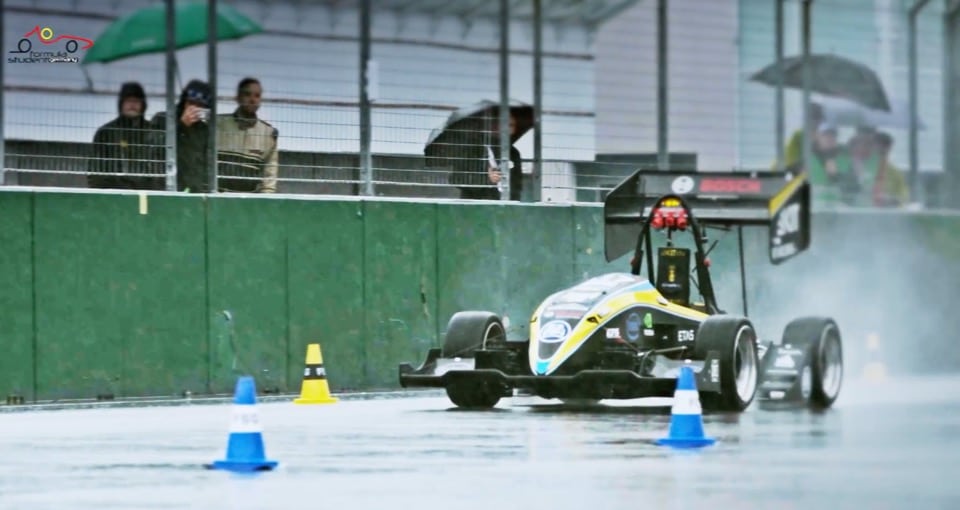An optimised SLAM architecture for autonomous racing on unknown race tracks
Problem statement
During autonomous racing in the formula student racing competition, at least 40m of the track in front of the car should be observed in order to provide the best possible racing lines. However, current sensing only provides 10m of accurate track layout. Therefore, most teams use their first lap to create an internal mapping that is then used for calculating the lines in the next laps. The cars should then be able to locate themselves in this internal map to have more prior knowledge of the upcoming race track.
This leads to two different localization problems with different requirements. The first localization, used in the first lap, has more computation available but should also provide an accurate map (in other words a full simultaneous localization and mapping or SLAM is required). In the subsequent laps, the localization will be more constrained in latency and computation since the car will be moving at a significantly higher speed, but this localization will have access to the previously created map.

Goal
The goal of this thesis is to develop an accurate but computationally more intensive SLAM algorithm and a very efficient, low-latency odometry algorithm that is guided by a map built by the SLAM algorithm. Additional research will be needed to correct/compensate for the different sensing in the two situations: e.g. the appearance of motion blur or the increased sparsity of the LiDAR point clouds due to the difference in car speed.

This thesis has been conducted by Costas Barrientos Rojas (Costas.BarrientosRojas@UGent.be).